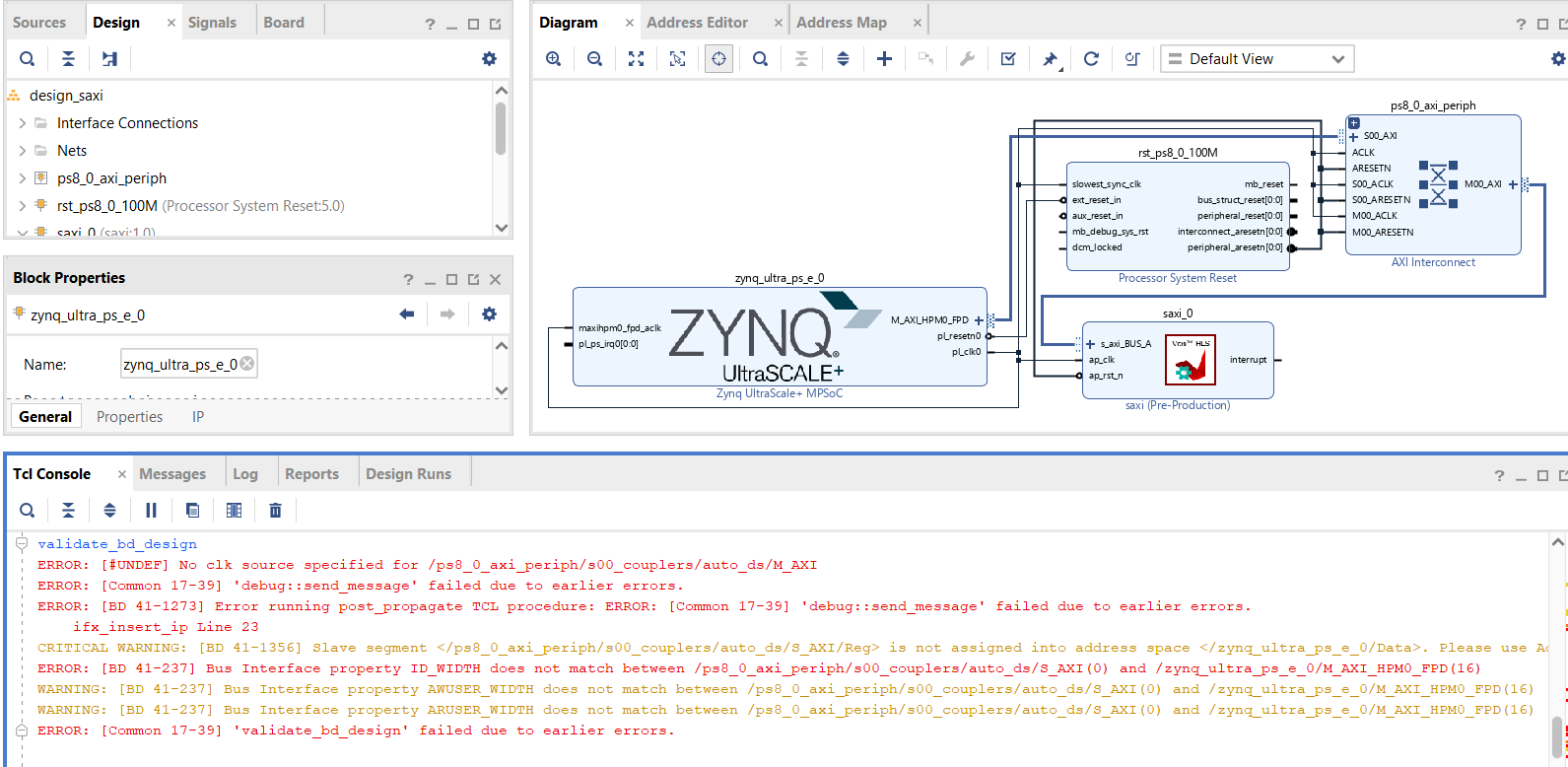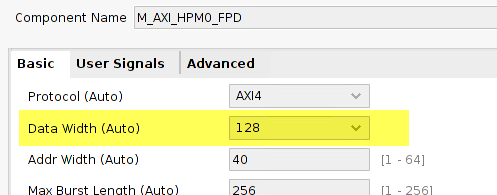Hi everyone,
I am looking for guidance here:
I need to interface my PS processor (application running on PetaLinux) with an IP created using Vivado HLS. My block design is shown below.
I just want to pass some data to my IP (sha256), have the calculation done on PL and return the value to my processor ARM Cortex-A53 on the PS. (I use Ultrazed-EG SOM / IO Carrier card)
From a block design perspective, am I missing something? Do I need to add an AXI DMA (or a AXI BRAM Controller) in between my MPSoC and my AXI interconnect?
Once design is finished, any advise on how to access the data from within Linux?
Best regards,




